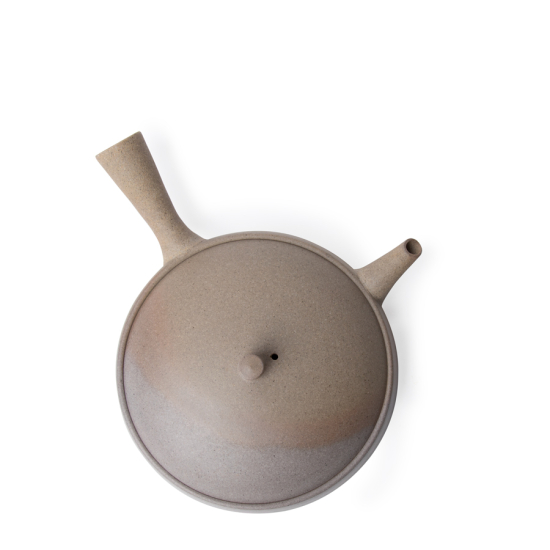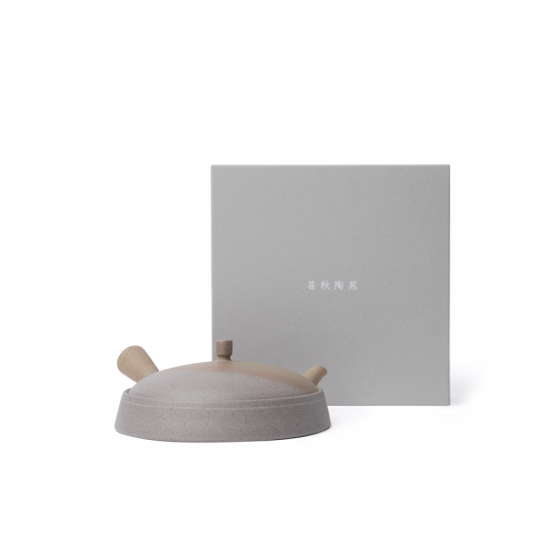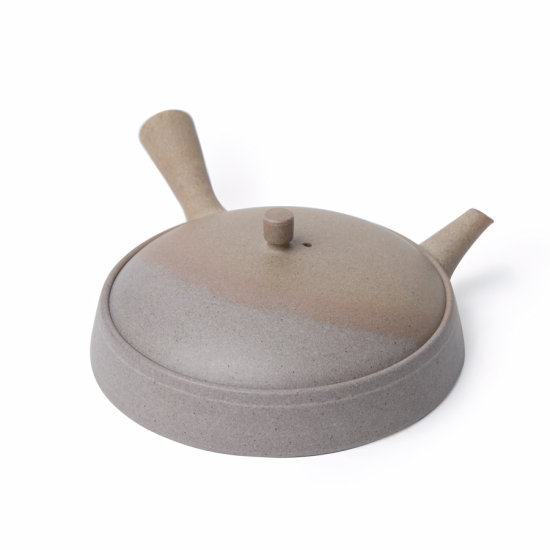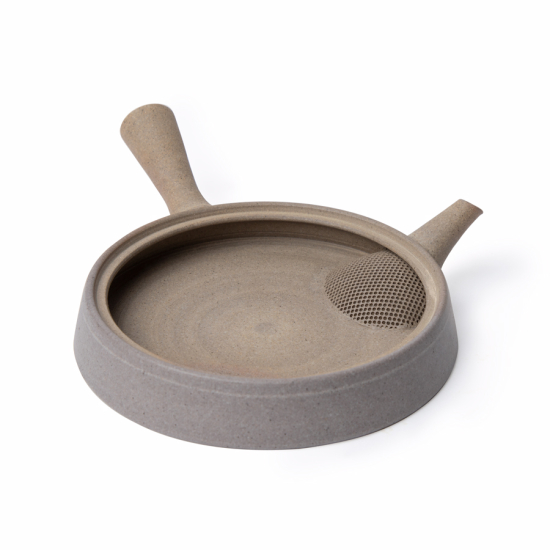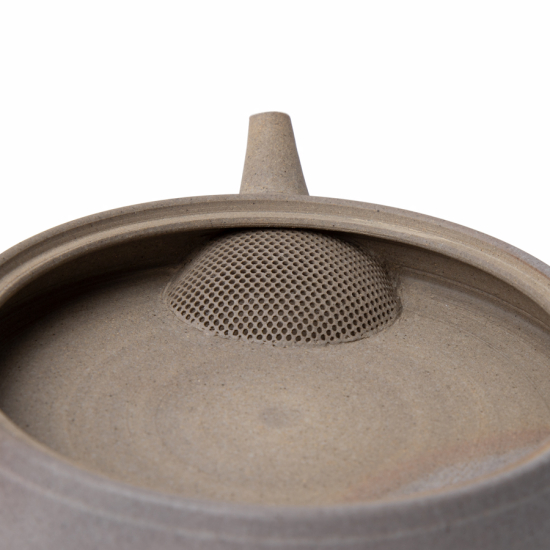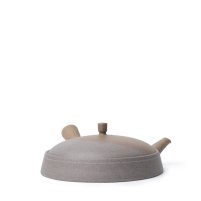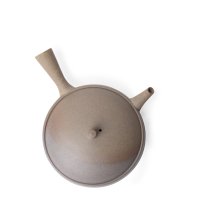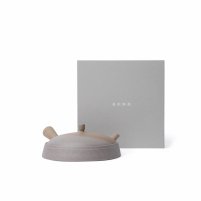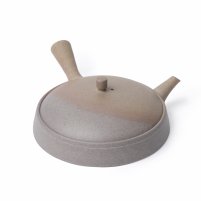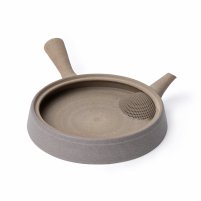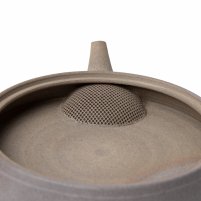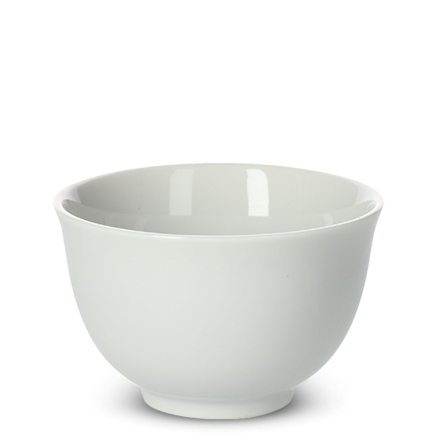As with all unglazed ceramics, wash with warm water and a soft cloth only. Do not use washing-up liquid or put in the dishwasher. Pat the outside dry with a towel and/or leave the Kyusu to air dry naturally with the lid off. If tea leaves get trapped in the filter, brush away with a soft brush.
Kyusu Tokoname
Hira Yohen L
Jinshu
SKU
4989
This award-winning flat Hira Kyusu teapot by the renowned Tokoname-yaki artisan, Jinshu, has a delicate Yohen ombré finish going from grey to beige. The wide and shallow design enables tea leaves to fully unfurl, enhancing the aroma and flavour: perfect for brewing fragrant teas at low temperatures.
| Product | Side-handle teapot, grey and beige |
| Origin | Tokoname, Aichi, Japan |
| Maker | Jinshu 甚秋 / Seiji Ito 伊藤 成二 |
| Volume | 110ml |
| Dimensions | Ø13cm x H3.5cm, handle 5.5cm |
| Weight | 245g |
| Material | Ceramic |
| Strainer | Ceramic (cera-mesh) |
| Finish | Unglazed (焼き締め Yakishime) |
| Decoration | Ombré (窯変 Yōhen) |
| Production | Potter's wheel (轆轤 Rokuro) |
| Artist mark | Signature on base |
| Packaging | Cardboard box |
Each piece is handmade and unique, therefore colour, volume, dimensions and weight may vary slightly.
In stock




